Ritonavir Storage Condition Checker
Check if your storage conditions meet the recommended standards for Ritonavir stability. Temperature should be below 30°C (86°F) with humidity ≤50% RH.
Enter your temperature and humidity to check if your storage conditions are safe for Ritonavir.
Key Takeaways
- Ritonavir stays stable when kept below 30 °C (86 °F) and away from moisture.
- Use the original blister pack or a dedicated pill organizer; avoid moving pills between containers daily.
- Refrigeration is only required for liquid formulations, not for tablets.
- Check expiration dates regularly and discard any discolored or cracked pills.
- When traveling, keep the medication in an insulated pouch with a temperature log.
Keeping your HIV meds working the way they should is a daily responsibility, and Ritonavir is a protease inhibitor used in antiretroviral therapy for HIV. If you store it wrong, you might lose potency and jeopardize treatment outcomes. This guide walks you through the science of drug stability, the practicalities of home storage, and the do‑and‑don’t list that saves you from costly mistakes.
Why drug stability matters for Ritonavir
Ritonavir belongs to the Protease inhibitor class. Like other antiretrovirals, it has a specific chemical structure that degrades when exposed to heat, light, or humidity. Degradation reduces the amount of active ingredient, which can lead to sub‑therapeutic dosing and viral resistance.
Studies from the WHO and various pharmaco‑stability labs show that Ritonavir tablets lose up to 10 % of potency after six months at temperatures above 30 °C combined with humidity over 60 % relative humidity (RH). The loss accelerates dramatically when the temperature climbs above 35 °C, a common scenario in hot summer months or in poorly insulated cupboards.
Ritonavir storage: Ideal conditions
The simplest rule is to keep tablets in a cool, dry place:
- Temperature: 20‑25 °C (68‑77 °F) is optimal. Anything below 30 °C is safe for the recommended shelf life.
- Humidity: Keep relative humidity at or below 50 % RH. A small desiccant packet inside the original container helps.
- Light exposure: Store away from direct sunlight. UV light can break down the active molecule.
- Air exposure: Keep the blister pack sealed. Once a pill is removed from its foil, exposure to air speeds up oxidation.
If you live in a climate that regularly exceeds these limits, consider a small medication fridge set to 2‑8 °C. This adds a safety margin without the condensation risks of a standard refrigerator door that opens frequently.
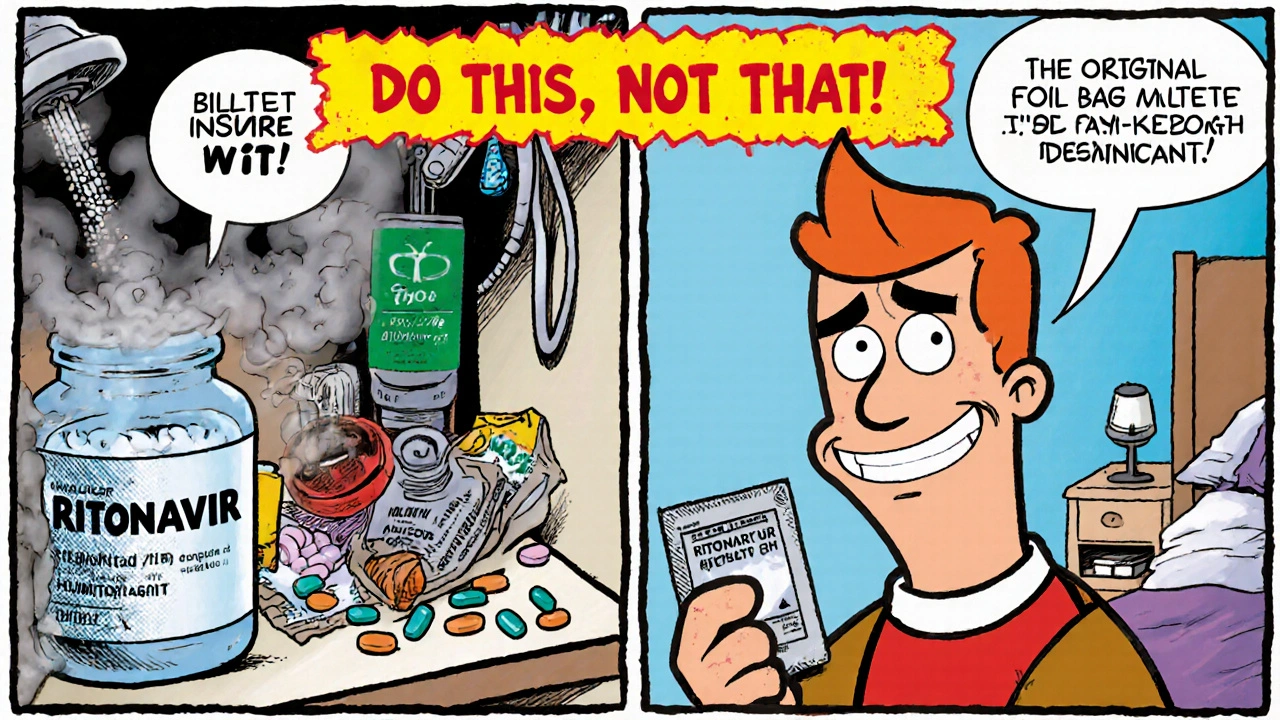
Common storage mistakes and how to fix them
Many patients assume a regular kitchen cabinet is fine. In reality, cabinets near ovens, dishwashers, or windows can swing between 20 °C and 40 °C throughout the day. Here are the top three pitfalls and quick fixes:
- Transferring pills to a bulk bottle. The bottle may not be airtight. Solution: Keep the original blister until you need a daily dose, then use a small, airtight pill organizer for the week.
- Storing with humidity‑producing items. Bathrooms and laundry rooms are high‑humidity zones. Solution: Choose a dry shelf in the bedroom or living room, away from showers.
- Freezing tablets. Some patients place every medication in the freezer for “long‑term storage.” Solution: Never freeze tablets; the frozen environment can crack the coating and alter dissolution rates.
Practical home‑storage checklist
- Keep the original blister pack inside an airtight container (e.g., a zip‑lock bag) with a desiccant.
- Label the container with the expiration date and batch number.
- Place the container on a shelf that stays below 30 °C year‑round.
- Check the blister weekly for any signs of moisture or discoloration.
- Rotate stock: use older batches first.
Traveling with Ritonavir
Being on the move doesn’t have to mean compromising potency. Follow these steps before you head out:
- Pack tablets in the original blister, then slide the blister into an insulated travel pouch.
- Include a mini temperature strip (these are cheap and change color at 30 °C) to monitor conditions.
- If you’re traveling by air, keep the medication in your carry‑on-not the checked luggage where temperature swings are extreme.
- For trips longer than two weeks, consider a short‑term medication fridge that plugs into a car outlet or hotel power strip.
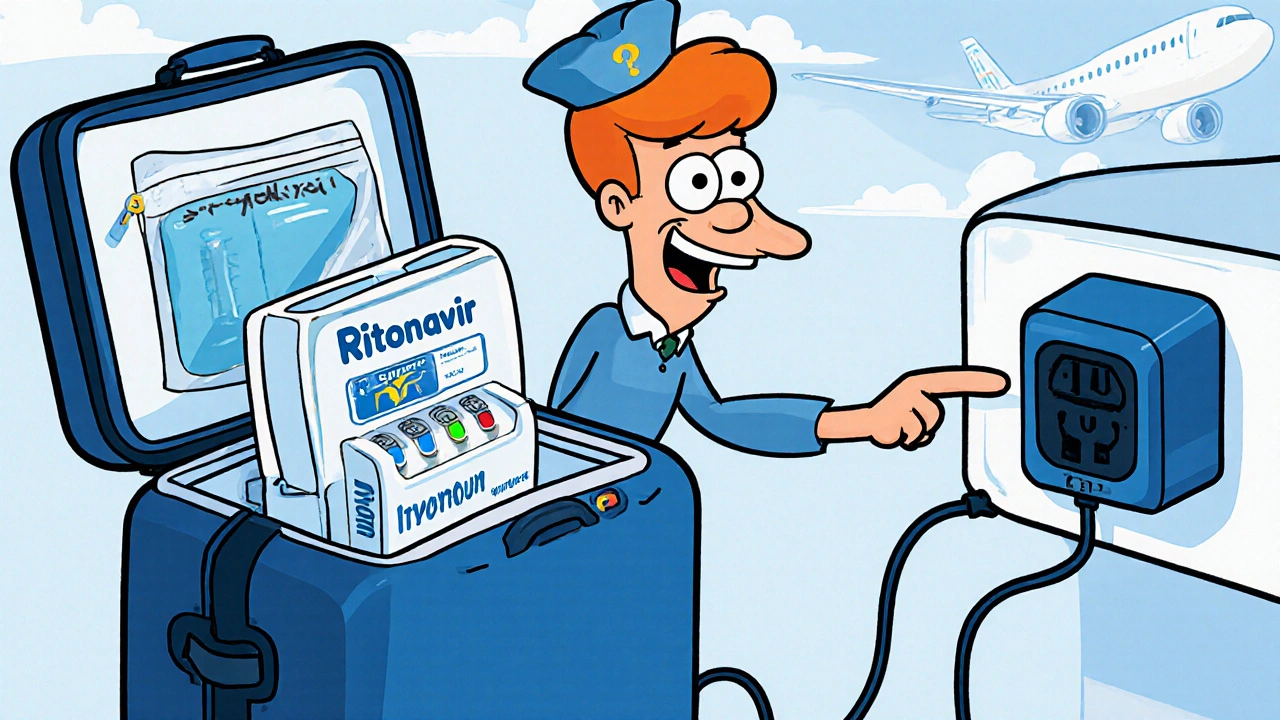
Managing leftovers and expiration dates
Ritonavir tablets have a typical shelf life of 24 months when stored correctly. However, once you open a blister, the clock starts ticking faster because of exposure to air.
Use these rules:
- Do not keep tablets past the printed expiration date, even if they look fine.
- If a pill looks cracked, powdery, or discolored, discard it.
- When you have a partial blister left, store it in a sealed, dry container and finish it within three months.
Storage Method Comparison for Ritonavir Tablets
| Method | Typical Temperature Range | Humidity Control | Pros | Cons |
|---|---|---|---|---|
| Room‑temperature cabinet | 20‑25 °C (68‑77 °F) | Dry (≤50 % RH) | Convenient, no special equipment | Risk if summer heat spikes |
| Refrigerated drawer | 2‑8 °C (36‑46 °F) | Low humidity | Extra safety margin | Not needed for tablets; condensation risk |
| Freezer | -18 °C (0 °F) | Very low | Never recommended - can damage tablet coating | Cracking, potency loss |
Frequently Asked Questions
Can I store Ritonavir tablets in a bathroom cabinet?
No. Bathrooms have high humidity that can degrade the tablet coating and reduce potency. Choose a dry, cool shelf instead.
Do I need a refrigerator for my Ritonavir pills?
Only if you receive a liquid formulation. Tablets are stable at room temperature as long as they stay below 30 °C and away from moisture.
What should I do if a tablet looks discolored?
Discard it immediately. Discoloration indicates possible degradation, and taking a compromised pill can lower treatment effectiveness.
Is it safe to keep a bulk bottle of Ritonavir?
A bulk bottle without a desiccant and airtight seal can let in moisture and air. It’s better to keep the original blister and transfer only what you need to a sealed organizer.
How often should I check the medication’s condition?
Inspect the blister at least once a week for any signs of moisture, cracks, or discoloration. Also verify the expiration date quarterly.

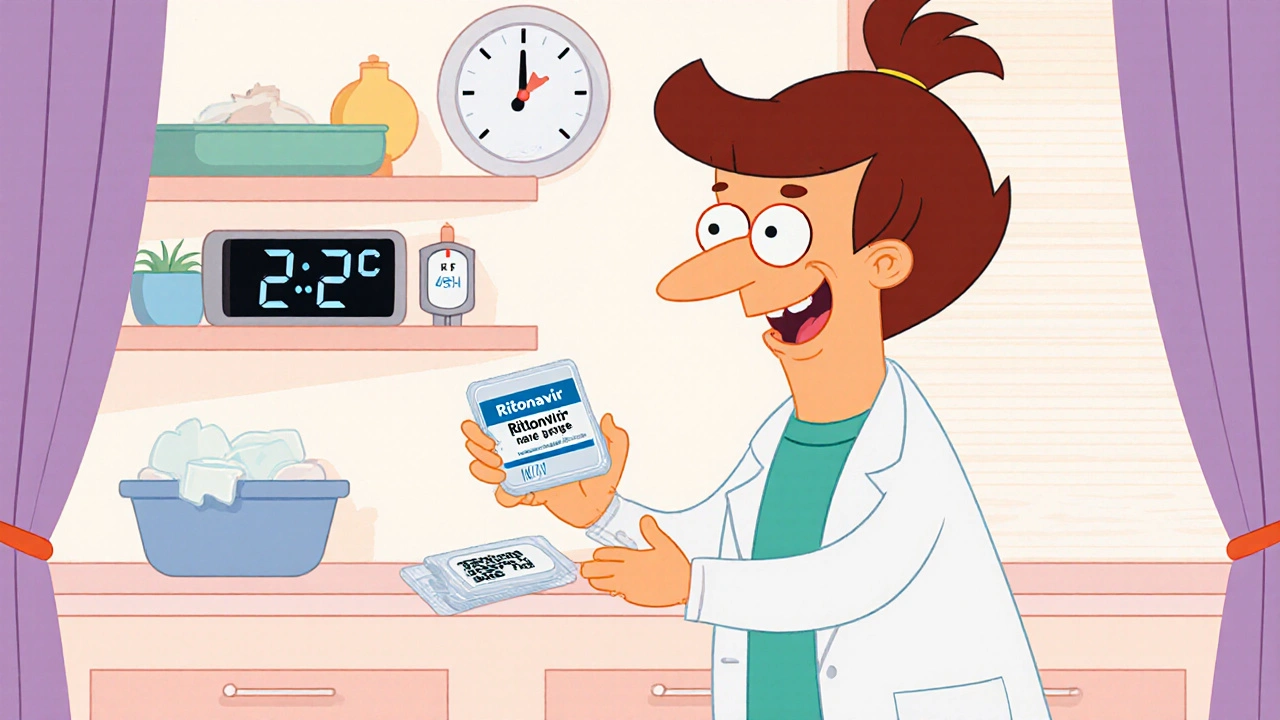
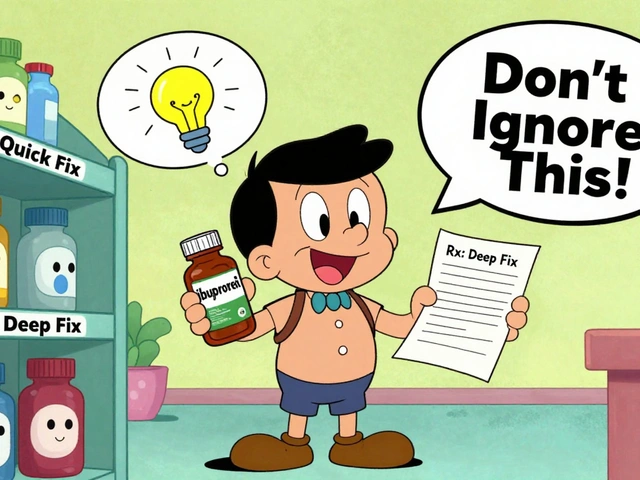
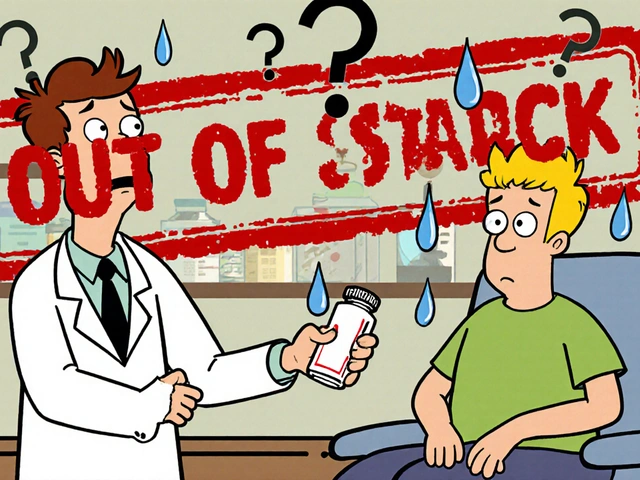
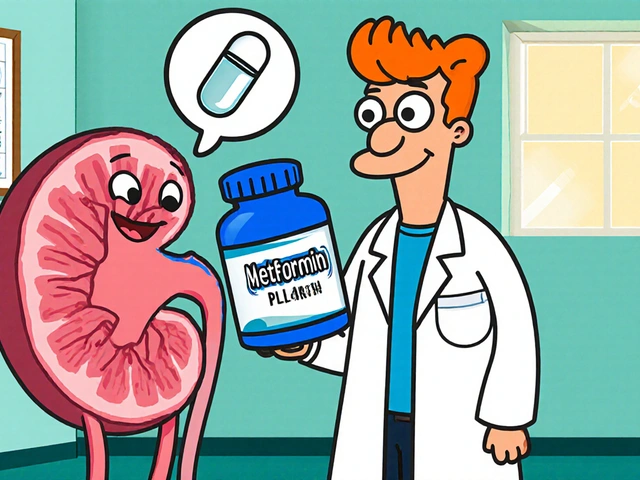

Felix Chan
October 19, 2025 AT 20:31Don't let your meds become a science experiment-just stash those Ritonavir tablets in a cool, dry spot, like a bedroom shelf that's away from the kitchen heat. A zip‑lock bag with a tiny desiccant packet does the trick, and you keep the original blister sealed until you need a dose. Check the pack once a week for any moisture or weird spots, and you’ll stay on track without any drama.
ashanti barrett
November 2, 2025 AT 16:51Exactly, and remember that a little routine check can save you a whole lot of trouble later; keep an eye on expiration dates and toss anything that looks off. Consistency in storage means consistency in treatment, so make that weekly glance a habit.
jagdish soni
November 16, 2025 AT 14:11One must contemplate the metaphysical implications of a pill lost to humidity it is not merely a chemical entity but a symbol of modern resilience yet the simple act of sealing a blister can preserve that essence the world rushes by unnoticed the quiet guardian is a zip‑lock and a desiccant save the dose.
Monika Bozkurt
November 30, 2025 AT 11:31From a pharmacokinetic stability perspective, maintaining a relative humidity below 50 % RH mitigates hydrolytic degradation pathways that compromise ritonavir’s protease inhibitory activity. Employing a hermetically sealed container equipped with silica gel aligns with Good Storage Practices as outlined by the WHO. Moreover, periodic verification of the blister integrity ensures compliance with the pharmaco‑stability specifications. Adherence to these parameters facilitates optimal therapeutic efficacy and reduces the risk of resistance development.
Ankitpgujjar Poswal
December 14, 2025 AT 08:51Listen up – you don’t need a fancy fridge to keep your pills potent, just lock them away from heat and moisture and you’re golden. Stop shuffling meds into random bottles; the original blister is your best defense. Every week do a quick visual audit, toss any cracked or discolored tablets without hesitation. This discipline will keep your viral load down and your confidence up.